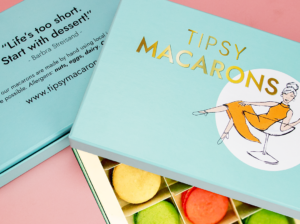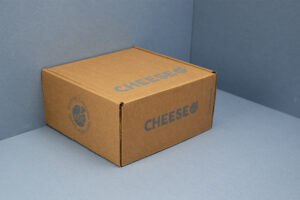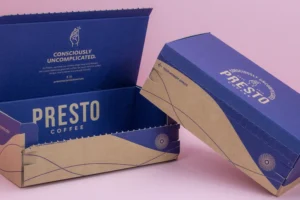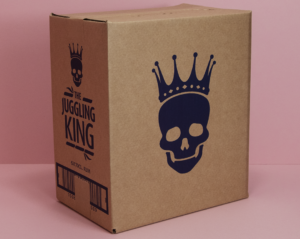How to Send Food (And Drinks) in The Post
Shipping food and drinks is no simple task for ambitious brands. Regulations around posting food and liquids, allergen labelling, temperature control, and eco-friendly packaging are all factors to consider.
As the UK’s leading plastic-free packaging supplier, we’re here to help you master the delivery process so that your products arrive fresh and intact, giving your customers exceedingly good experiences with your brand.
Let’s go!
Getting Started: Regulations for Sending Food in The Post
Before anything, businesses need to understand the regulations around the shipping of food and drinks. The consequences of non-compliance with sometimes stringent regulations can be severe, ranging from fines and penalties to damaging your brand’s reputation.
Review the guidelines around shipping food domestically and internationally to ensure you aren’t caught short.
a. Shipping Food within the UK
The Food Standards Agency (FSA) provides information and guidelines on food hygiene and safety controls for domestic shipments. These guidelines will help ensure your products remain safe for consumption when they reach their destination.
To ship food inside the UK, you’ll need:
- Food-grade packaging
- Ingredients lists
- Allergen information
- Storage instructions
- Batch or lot numbers
- Nutrition declaration*
*if you make a nutrition or health claim or if you’ve added vitamins or minerals to the food.
You may be required to provide further information on or within your packaging, depending on the kind of products you’re selling. If you need packaging advice, don’t hesitate to get in touch with our packaging experts.
b. Shipping Food Internationally
Regulations become a lot more complex if you plan to ship items globally. Your brand will need to comply with the rules of the destination country as well as UK regulations. Each country has its own set of requirements related to importing food and perishable items. Still, there are plenty of resources for food, catering and retail services that provide helpful information to help you get started.
No matter where you’re sending your delectable delights, maintaining industry standards and adhering to best practices for sending food in the post will help your brand consistently meet customer expectations for quality, safety and service.
In short, great service equals happy customers!
What Kind of Food Can Be Sent in The Post?
Two classifications of food can be sent in the post, and each carries different requirements and considerations:
- Perishable items (higher risk)
- Non-perishable items (lower risk).
Items that can perish include:
- Meat, poultry and fish
- Milk, cream and cheese
- Fresh fruit and vegetables
- Gravies and sauces containing meat.
Packages containing perishable food must move through the postal service quickly to avoid spoiling, so next-day postage is a must. These items can’t be left in a delivery office or on your customer’s doorstep, even if they’re packaged appropriately.
On the other hand, non-perishable items don’t have so many requirements:
- Honey
- Jams and conserves
- Pickles (or pickled food)
- Dried food
- Sweets.
Food items such as these are typically pre-packaged or sealed to maintain freshness. They don’t need to be refrigerated and can be safely kept at wider temperatures, meaning they don’t need to move through the postal system as quickly — although prompt delivery is always preferable to consumers.
How to Pack Food Items for Shipping
Most food items are delicate, so they need adequate protection to keep them from becoming damaged before they arrive at their destination. Quality and freshness also need to be maintained, so let’s look at how that can be achieved at scale.
1. Primary Packaging: Sealing and Wrapping
If you’re shipping freshly made goods, like cakes, brownies and cookies, they’ll only stay unspoilt for a short time. The primary packaging you use — the packaging that comes into direct contact with your products — must help the food maintain its freshness.
If your products have a very short shelf-life, it may be beneficial to seal your products to prevent spoilage. For certain food items, vacuum sealing can be an effective method. For most other products, including freshly baked goods, wrapping them in greaseproof paper is a good option.
Using greaseproof paper is typically less expensive than vacuum sealing and still creates an effective barrier for grease and moisture that will preserve your food items for longer. It’ll also protect the exterior packaging for maximum recyclability.
Finally, pre-packaged products like chocolate bars and coffee pods are much easier to manage since they have a much longer shelf life.
2. Secondary Packaging: Postal Boxes and Mailers
The secondary packaging is the first thing your customers will come into contact with, so don’t waste this opportunity to showcase your branding. Cardboard postal boxes have large, flat surfaces that can be used to print your brand name, logo, artwork, and any additional information relating to your products.
Double-packing — where the product is first sealed in a primary package and then placed in a secondary package with sufficient padding — is common practice when shipping food items. If your products require extra protection, add paper void-fill to your postal box to reduce migration (the fancy word that describes the movement of your products inside the box).
3. Tertiary Packaging: Shipping Boxes
If you send your food items to stores and supermarkets, you need the right packaging to transport your goods securely. We offer custom transit packaging to help you send your products in bulk. These boxes can be printed to showcase your branding, but more importantly, they can be made bespoke so that you ship precisely the right quantities of your products each time, optimising the supply chain.
We can help you with shelf-ready packaging and point-of-display packaging if your food items are being sold in stores.
Related: A Guide to Shelf-Ready Packaging: Boosting Sales for Retail Products
Eco-Friendly Packaging Solutions for Sending Food Products
The packaging you choose ultimately needs to keep your products intact and safe for consumption. Achieving this with sustainability in mind might seem like a daunting task, but we’re here to help.
Selecting the right eco-friendly packaging is a delicate balance. You need to consider the nature of your product, the expected transit time and the outside climate — if you’re posting from the UK, your packaging needs to be ready for anything!
Here’s a few ways to make your packaging safe and sustainable:
1. Use Food-Grade Packaging
Only certain kinds of packaging are safe for use with food items. Our food-grade packaging is certified to be safe to come into contact with food products and is made from recycled, eco-friendly materials. Plus, our BRCGS-accredited storage facilities uphold the highest standards for food packaging safety.
2. Minimise Pack Size and Weight
Getting the perfect packaging by size and weight can reduce your postage costs, which can hugely benefit smaller businesses. If you opt for letterbox-size packaging, you can ensure your packages will be posted right to your customer’s door or in a secure location.
For everything else, we have an array of custom packaging solutions that can be designed and customised in line with the size and weight categories of your chosen delivery service, further optimising your packaging operation.
3. Choose a Reliable Delivery Service
Rapid delivery is essential when shipping perishable items. Different services are available from various UK companies. For example, Royal Mail offers next-day delivery, while DPD has several options for sending food. The best shipping option for your brand will depend on the shelf life of your goods and your customers’ requirements.
Don’t forget to keep your customers informed about the expected delivery timelines. Providing them with tracking information can also reassure them and enhance their overall experience.
Featured: Tipsy Macarons
Case Study: Tipsy Macarons x Packaging Supplies
We teamed up with Tipsy Macarons to produce sustainable packaging allowing their customers to get these alcohol-infused delights right to their door. The luxury rigid boxes offer a high-end finish thanks to foil blocking on the brand name and the use of pastel colours.
Regarding the product itself, macarons are perishable as they contain eggs and dairy. We needed to design packaging that complied with all of the rules and regulations to ensure the brand’s delicious products arrived on time and intact.
Packaging Supplies for Sending Food by Post
Need to ship perishable or non-perishable items to your customers? We’ve helped hundreds of food and drinks brands create effective, sustainable and compliant product packaging. No matter what you’re sending, our team has the expertise to make your packaging a success.
Get a FREE packaging quote for custom boxes, trays and bags in just 48 hours!







